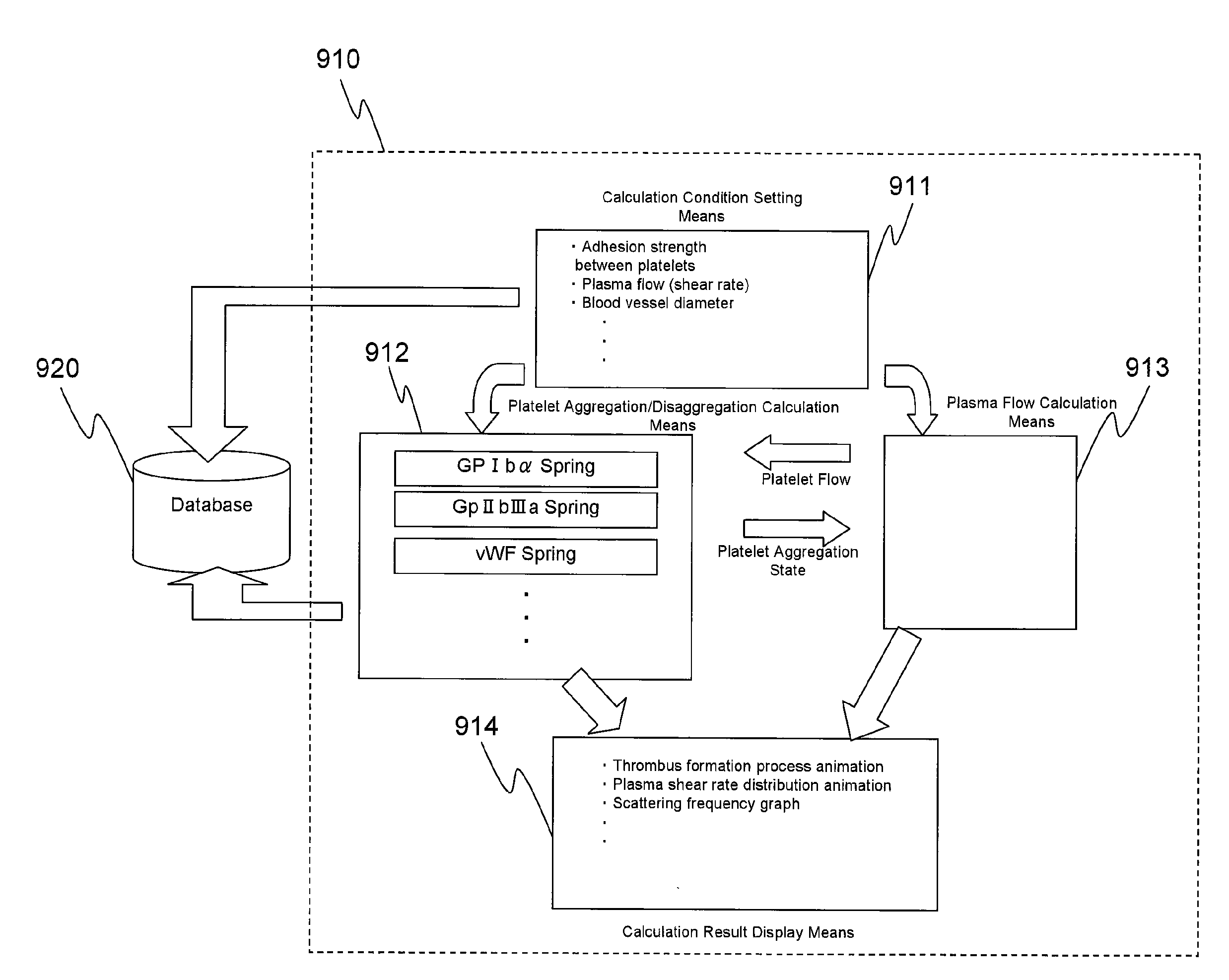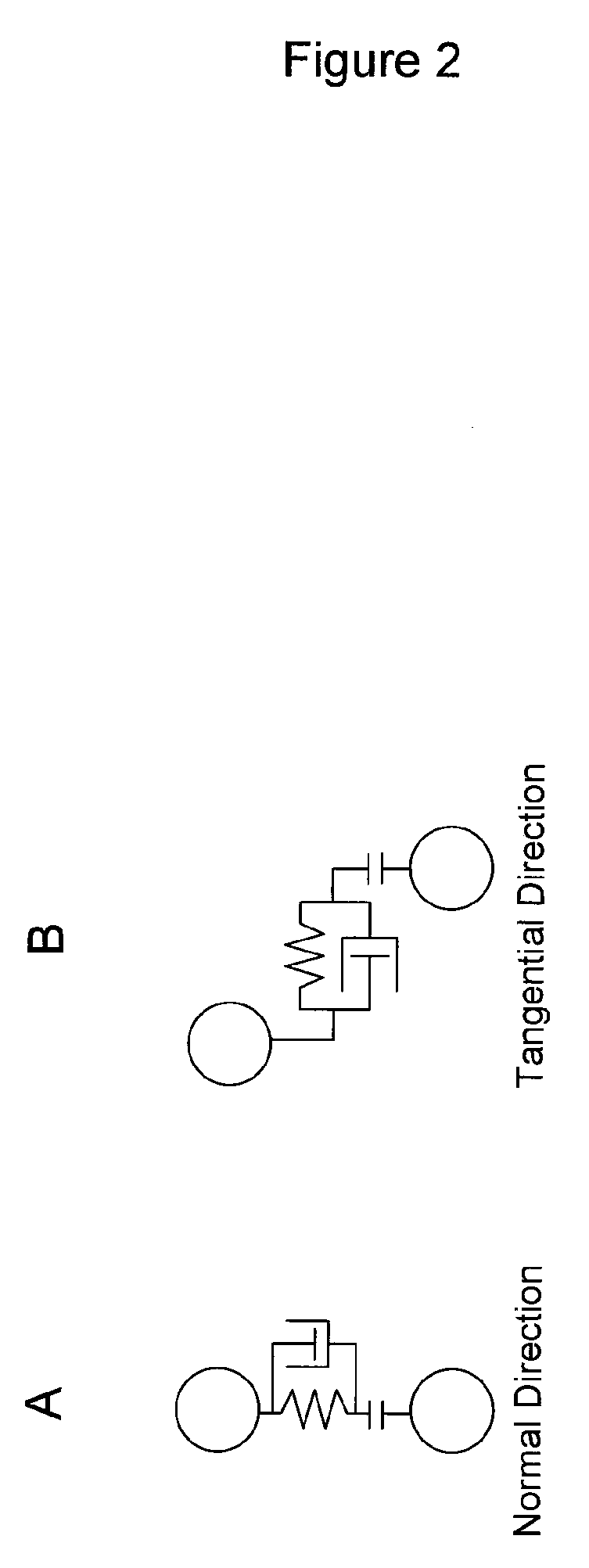Platelet thrombus formation simulator
a platelet thrombus and simulator technology, applied in the field of platelet thrombus formation simulators, can solve the problems of not taking into account the effects of a plurality of adhesion molecules, the change in adhesion force caused, and the calculation of conventional models cannot account for biological processes, so as to reduce the cyclic amp, inhibit the adhesion of platelets, and reduce the effect of thrombus inhibition
- Summary
- Abstract
- Description
- Claims
- Application Information
AI Technical Summary
Benefits of technology
Problems solved by technology
Method used
Image
Examples
example 1
[0272]In vitro human platelet and vWF solid-phase surface adhesion state analysis in a parallel plate micro-fluid channel
[0273]In this example, platelet thrombus formation was simulated under the following condition settings:
Platelet diameter1(μm)Shear stress100 to 3,000(l / s)Blood vessel diameter40(μm)Blood vessel length400(μm)Phenomenon duration3(minutes)
[0274]The results are shown in FIG. 15.
[0275]FIG. 15 shows that when a simulation is conducted using the simulator of the present invention, there is strong coordination with actual measured values, showing that actual platelet thrombus formation can be simulated
PUM
 Login to View More
Login to View More Abstract
Description
Claims
Application Information
 Login to View More
Login to View More - R&D
- Intellectual Property
- Life Sciences
- Materials
- Tech Scout
- Unparalleled Data Quality
- Higher Quality Content
- 60% Fewer Hallucinations
Browse by: Latest US Patents, China's latest patents, Technical Efficacy Thesaurus, Application Domain, Technology Topic, Popular Technical Reports.
© 2025 PatSnap. All rights reserved.Legal|Privacy policy|Modern Slavery Act Transparency Statement|Sitemap|About US| Contact US: help@patsnap.com



